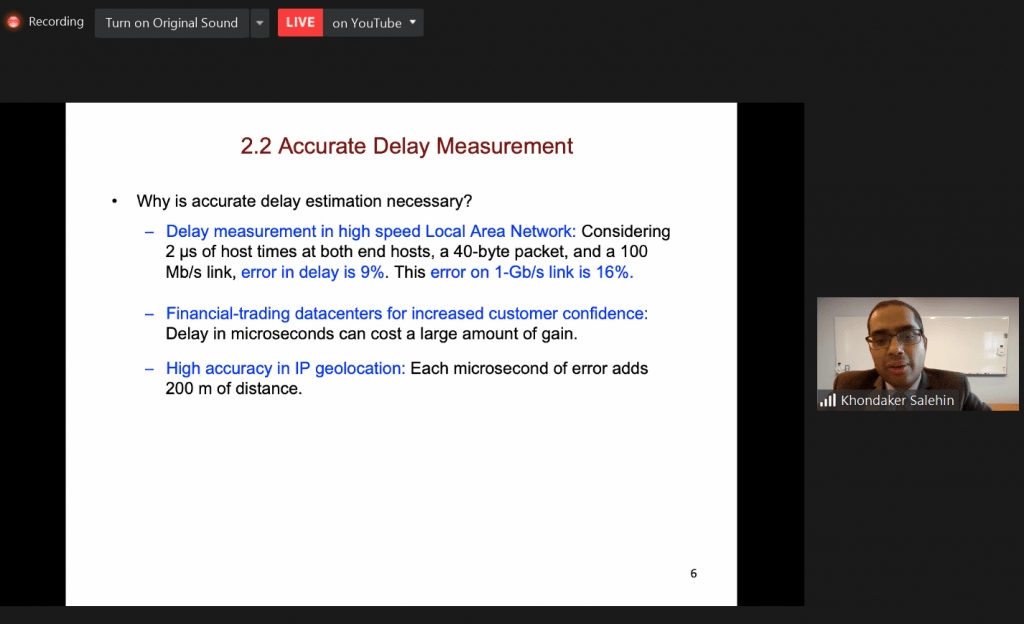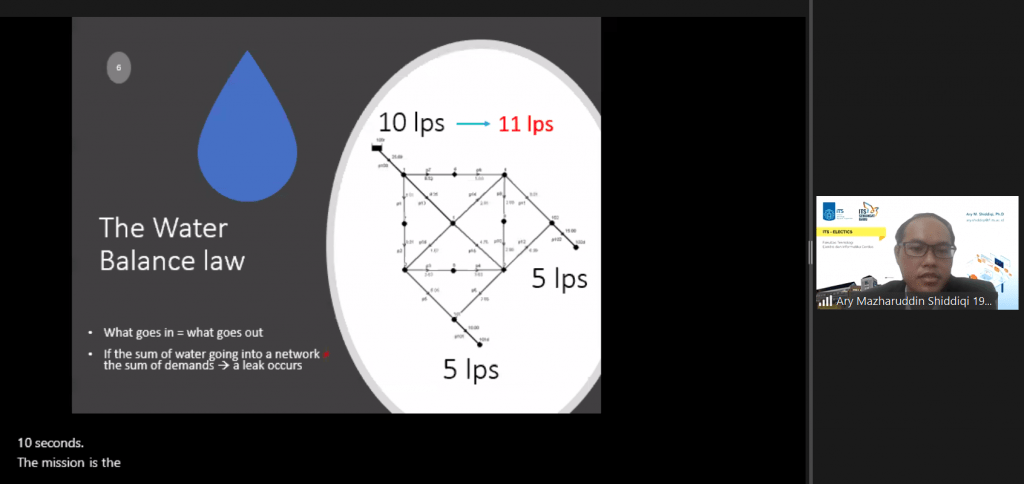ELECTICS Conduct Computer Networks Knowledge Sharing Through Their Webinar Series
Faculty of Intelligent Electrical and Information Technology
Sorry, no posts matched your criteria.

Professor from California State University (CSU), Khondaker Salehin was presenting his material through Zoom Meetings in the Faculty of Intelligent Electrical and Informatics Technology (ELECTICS) Webinar Series.
Surabaya, 29 June 2020
Supporting the development in computer networkings, The Faculty of Intelligent Electrical and Informatics Technology (ELECTICS) of Institut Teknologi Sepuluh Nopember (ITS) doing collaboration with California State University (CSU) to hold a Webinar Series that focuses on discussing about Computer Network and their Application on last Friday (6/26).
The Webinar Series, which was held as a realization of the collaboration agreement between ITS’ ELECTICS and CSU’s Department of Computer Science in early June, presented Professor Khondaker Salehin from CSU as the speaker. “The Webinar is the first milestone of our collaboration,” said Secretary of the Academic and Student Affairs of Informatics Department, Ary Mazharuddin Shiddiqi.
Computer networking itself were a technology that make two or more computer and their supporting device able to connected with each other so it’s possible to share data between units. Connection between computing network can be occurred using connecting cable or wireless media. One example of computer network that is commonly known is the Internet.
In the first topic entitled Improvement of Delay Estimation over End-to-End Paths, Professor Salehin describe the concept of delay in computer networks. Delay itself refer to the amount of time it takes for the data to travel across the networks. “Delay is an inherent parameter of the Internet infrastructure,” said the professor who come from India.
Furthermore, Salehin explains that measurement of delay over end-to-end paths using the conventional tool called Ping is erroneous. The Packet Processing Time (PPT) at the workstations is identified as a source of error in the measurement that needs to be estimated for accurate characterization of end-to-end delay.
Related to this, Salehin then discussed his research using a scheme to measure PPT without special hardware then presented using empirical data collected in testbed and Internet environments. “Estimating the queueing delay on an Internet router is important if you want to get a more accurate characterization of the delay,” he said.
The first topic also include discussion about a self-sufficient scheme to calculate the delay of all routers and various studies within the scope of calculating PPT and delay.
Continues to the second part of the Webinar presented by ELECTICS Lecturer, Ary Mazharuddin Shiddiqi PhD. He conduct the topic in the application of distributed sensor network technology entitled An Effective Sensor Placement Strategy to Quantify Small Leaks in Water Distribution Networks.

Ary Mazharuddin Shiddiqi PhD explained his material through the Zoom Meetings platform in the ELECTICS Webinar Series.
Based on his experience way back then when he had to finish his doctoral study abroad, he realize the small rainfall in Australia caused a limited availability of clean water. The Informatics Department Lecturer who familiarly called Ary, poured his idea to reduce water leakage in water pipes and improve the water distribution networks.
The impact of water leakage can be minimized by placing a water flow sensor inside the pipe. To find the most strategic location to place the sensor, Ary models a small leak of water pipes using Lean Graph. The modelling is used to find the strategic location of a numerous sensors.
By using this modelling, the man who’s origin in Kediri proved that Lean Graph were indeed effective to find the most strategic sensor placement to find the location of a leakage in water pipe. It’s proved by the high accuracy of the method built in the conducted experiments.
The Academician expressed his hope for the things that conveyed in the Webinar could be applied in the real world as well helping the development of technology in the related field to improving forward. “Continuously, ELECTICS will also hold another series of webinars with various interesting topic in technology scope,” conclude Ary. (rys)
Latest News
Sorry, no posts matched your criteria.





